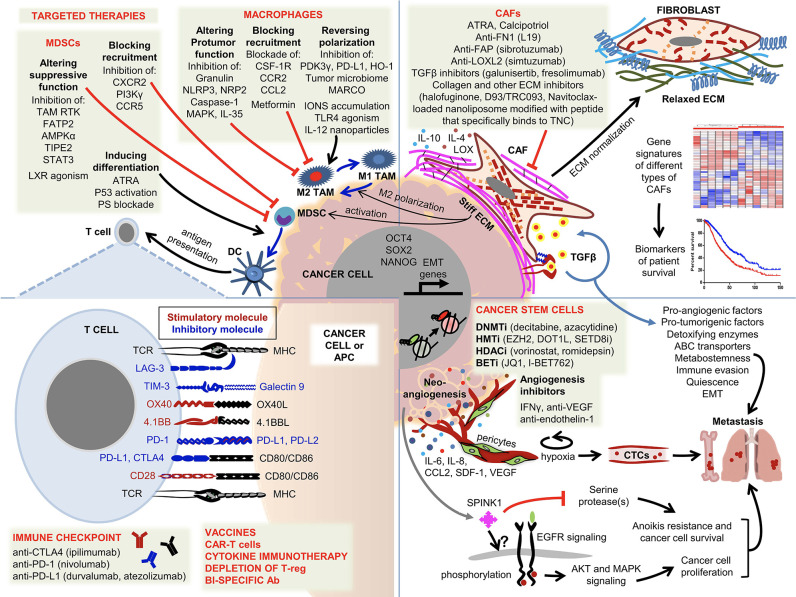Figure 1.
Overview of the components of the tumor microenvironment and current strategies to target these cells. Malignant cells establish early cross-communications with a wide range of host cells forming a favorable microenvironment consisting of fibroblasts, immune cells, ECM, endothelial cells and pericytes. While infiltration of T lymphocytes is a good prognostic factor, the majority of invasive/metastatic carcinomas establish immunosuppressive and tumor-promoting TMEs. The complex interaction between the tumor cells and the other components within the TME is illustrated and the following abbreviations are used. ABC transporter, ATP binding cassette transporter; Ac, acetylation; APC, antigen presenting cell; ATRA, all trans retinoic acid; BETi, bromodomain inhibitors; CAF, cancer-associated fibroblast; CAR-T-cell, chimeric antigen receptor T cell; CTC, circulating tumor cell; DC, dendritic cell; DNMTi, DNA methyltransferase inhibitors; ECM, extracellular matrix; EMT, epithelial-mesenchymal transition; HDACi, histone deacetylase inhibitors; HMTi, histone methyltransferase inhibitors; MDSC, myeloid-derived suppressor cell; Me, methylation; MHC, major histocompatibility complex; TAM, tumor associated macrophage; TCR, T-cell antigen receptor; Treg, regulatory T cell.

